



 What is Phlegm-Dampness?
What is Phlegm-Dampness?

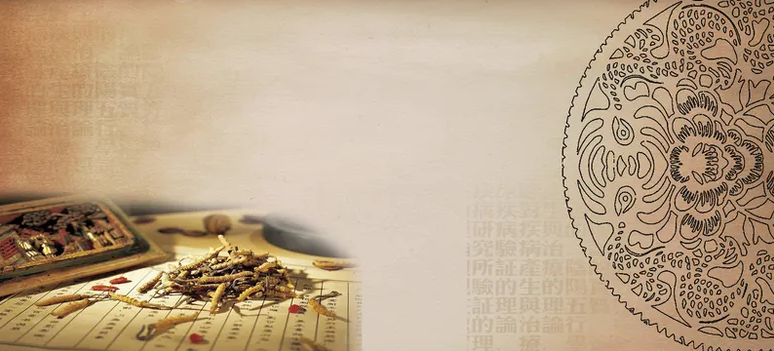
Phlegm-Dampness refers to pathological products caused by dysfunction of the lungs, spleen, and kidneys, leading to abnormal water metabolism in the body, characterized by both phlegm and dampness.
The so-called phlegm is a pathological product formed by the accumulation and condensation of water in the body, which is thick and sticky. It can be visible phlegm that is coughed up from the lungs and stomach, known as “tangible phlegm” in TCM, or it can be phlegm that is not visible or palpable but can be qualitatively analyzed through disease mechanisms, referred to as “intangible phlegm”.
Dampness, on the other hand, has no obvious characteristics and often presents in a “gaseous state”, characterized by a diffuse heaviness in the limbs, soreness, loose stools, and a thick tongue coating.
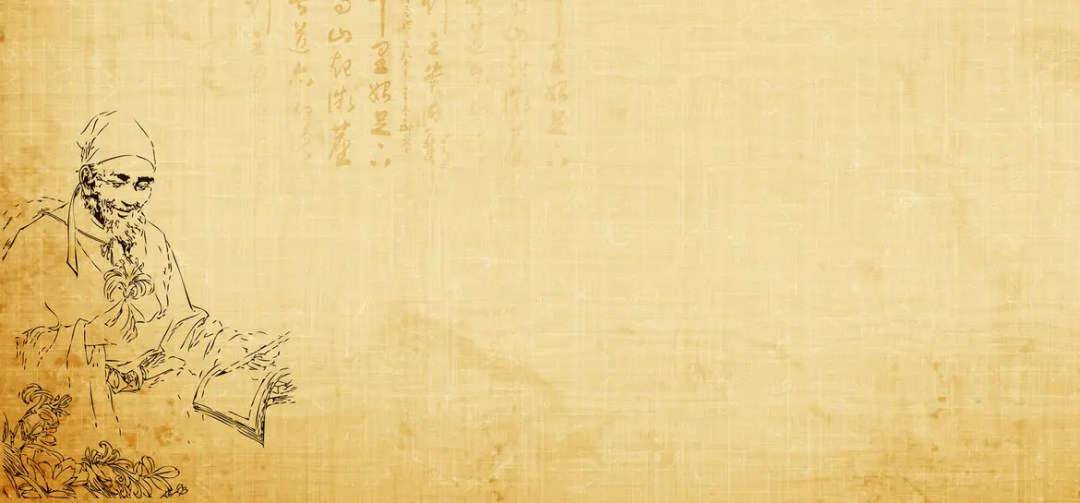
Phlegm-Dampness is a pathological substance resulting from abnormal metabolism of body fluids, primarily attributed to poor spleen function, abnormal lung dispersal and descending, weakened kidney transformation, and dysfunctional distribution by the San Jiao (Triple Burner), with the spleen being the most closely related.
“All dampness and swelling belong to the spleen”; the spleen governs dampness, and when dampness moves, it becomes phlegm. If the spleen is deficient and cannot transport fluids, or if dampness obstructs the spleen, it leads to the accumulation of internal dampness, which can either form phlegm or accumulate into fluid..
 II. Causes of Phlegm-Dampness
II. Causes of Phlegm-Dampness
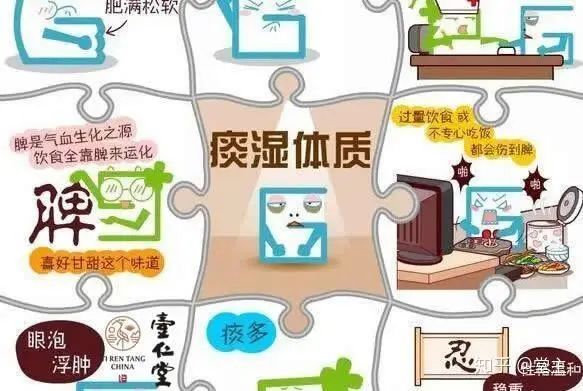 1. Irregular Diet: Frequent overeating, excessive consumption of rich and greasy foods, and alcohol damage the spleen and stomach, preventing the proper distribution of nutrients and the transformation of dampness, leading to the internal generation of dampness and phlegm accumulation.2. Invasion of Cold Dampness: Humid weather, exposure to rain, or prolonged residence in damp areas can lead to dampness invading the body, obstructing the spleen and stomach, causing dysfunction in the transformation of water and dampness, resulting in phlegm accumulation in the lungs.3. Lack of Exercise: Prolonged inactivity and sedentary lifestyle can hinder the circulation of Qi and blood, leading to stagnation in the spleen and stomach, preventing the transformation of dampness and resulting in internal phlegm-dampness.4. Aging and Chronic Illness: Weakness of the spleen and stomach, reduced transformation function, or deficiency of kidney Yang can hinder the transformation of Qi and water.5. Congenital Factors: Individuals with a predisposition to stomach heat who consume excessive rich foods may have insufficient spleen function, leading to dampness and phlegm accumulation.
1. Irregular Diet: Frequent overeating, excessive consumption of rich and greasy foods, and alcohol damage the spleen and stomach, preventing the proper distribution of nutrients and the transformation of dampness, leading to the internal generation of dampness and phlegm accumulation.2. Invasion of Cold Dampness: Humid weather, exposure to rain, or prolonged residence in damp areas can lead to dampness invading the body, obstructing the spleen and stomach, causing dysfunction in the transformation of water and dampness, resulting in phlegm accumulation in the lungs.3. Lack of Exercise: Prolonged inactivity and sedentary lifestyle can hinder the circulation of Qi and blood, leading to stagnation in the spleen and stomach, preventing the transformation of dampness and resulting in internal phlegm-dampness.4. Aging and Chronic Illness: Weakness of the spleen and stomach, reduced transformation function, or deficiency of kidney Yang can hinder the transformation of Qi and water.5. Congenital Factors: Individuals with a predisposition to stomach heat who consume excessive rich foods may have insufficient spleen function, leading to dampness and phlegm accumulation.
6. Regional Influence: The southern regions of China are generally more humid, especially during the plum rain season. Prolonged residence in damp areas can obstruct the spleen’s function, leading to phlegm-dampness constitution. Due to the hot weather, frequent consumption of cold foods, especially seafood, can also be a source of phlegm.
 III. Dangers of Phlegm-Dampness
III. Dangers of Phlegm-Dampness
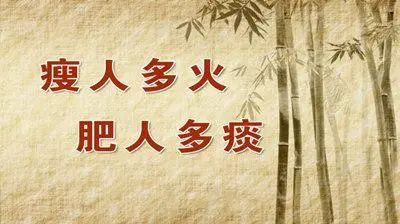
Ancient wisdom states, “All diseases arise from phlegm.” Phlegm-dampness is a breeding ground for diseases, easily leading to obesity, hypertension, hyperlipidemia, metabolic syndrome, nodules, tumors, and endocrine disorders.Obesity: “Obese individuals often have phlegm-dampness, while thin individuals tend to have internal heat”; those with phlegm-dampness are prone to weight gain.Hypertension: Phlegm-dampness obstructs the clear Yang, preventing it from rising, while the turbid Yin fails to descend. Over time, this can lead to a lack of nourishment in the head and may be accompanied by symptoms such as nausea, dizziness, and headaches.Hyperlipidemia: Phlegm-dampness increases blood viscosity, making hyperlipidemia more likely.Fatty Liver: Fatty liver caused by alcohol consumption, rich diets, and staying up late is often related to phlegm-dampness constitution.Coronary Heart Disease: If phlegm-dampness obstructs the coronary arteries, it can hinder chest Yang, leading to coronary heart disease. Cerebrovascular diseases: The sticky nature of dampness can adhere to blood vessel walls, obstructing the flow of Qi and blood, leading to sluggish blood flow, thrombosis, and atherosclerotic plaques, which can easily result in cerebrovascular diseases.Diabetes: Individuals with phlegm-dampness often have spleen deficiency, leading to incomplete transformation of ingested food, resulting in phlegm-dampness accumulation, which can eventually lead to heat and deplete spleen Yin, causing diabetes, classified in TCM as “Xiao Ke” (wasting-thirst).Gout: Long-term consumption of rich foods and strong alcohol damages the spleen and stomach, leading to dysfunction in transformation and accumulation of dampness, which can result in phlegm-dampness constitution. When phlegm-dampness accumulates, it can transform into heat, causing local inflammation in joints.Acne: Individuals with phlegm-dampness constitution often have oily skin, making them prone to acne.Nodules, Fibroids, Tumors: TCM states, “Dampness accumulates to form phlegm”; when Yang Qi is insufficient, excessive dampness accumulates, forming tangible pathogenic factors, such as polyps in the stomach and intestines, lung nodules, uterine fibroids, and lipomas on the skin, which can further develop into tumors.Menstrual Irregularities: Phlegm-dampness can obstruct blood vessels, leading to delayed menstruation, reduced flow, or even amenorrhea.Mental Disorders: Phlegm can also affect mental states; if the turbid Qi of phlegm-dampness obstructs normal cognitive functions, it can lead to symptoms such as excessive talking, depression, and unexplained sadness, classified in TCM as “Phlegm obstructing the heart”.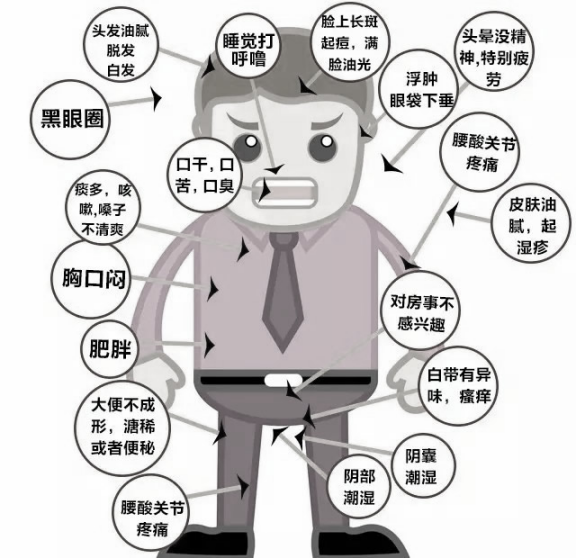



IV. TCM Methods for Regulating Phlegm-Dampness

 1. Dietary Regulation
1. Dietary Regulation
Principles for Nourishing Phlegm-Dampness Constitution Focus on protecting the spleen and avoiding damage to it. The Huangdi Neijing refers to the spleen and stomach as the “granary of the nation”. If the granary is empty, what are the consequences? Therefore, individuals with phlegm-dampness constitution must protect their spleen and stomach. Those with phlegm-dampness are often overweight, feel heavy and fatigued, and prefer rich foods, often consuming large quantities. In dietary therapy, it is crucial to avoid rich and greasy foods, abstain from alcohol, and avoid overeating and eating too quickly. A light diet is recommended, with appropriate consumption of ginger. Avoid sour, cold, greasy, and astringent foods, especially sour foods. Increase intake of vegetables and fruits, particularly those that strengthen the spleen, eliminate dampness, and resolve phlegm.
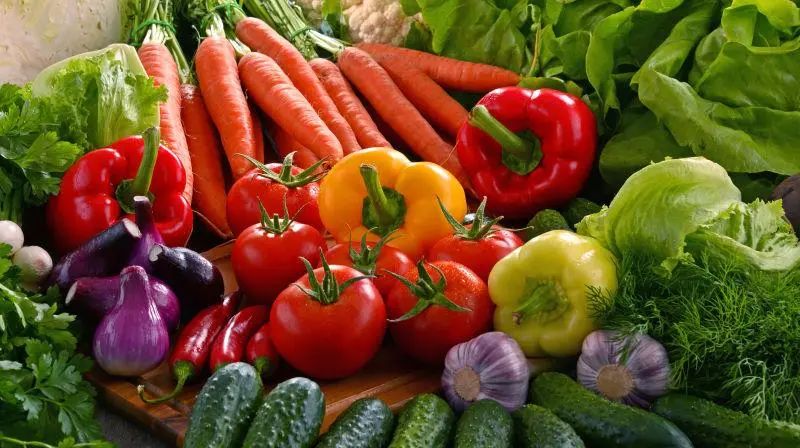
Foods suitable for individuals with phlegm-dampness constitution include mustard greens, leeks, turnips, Chinese toon, chili peppers, garlic, scallions, ginger, papaya, white radish, water chestnuts, seaweed, onions, ginkgo nuts, jujubes, lentils, fava beans, cabbage, Chinese yam, coix seeds, winter melon seeds, beef, chicken, hairtail fish, loach, yellow eel, apricots, lychees, lemons, cherries, and bayberries. Salt intake should be limited, and rich, greasy, sour, and astringent foods such as rock candy, pomegranates, grapefruit, loquats, and sugar should be avoided. Additionally, almond cream, lotus root powder, and poria cakes are good dietary supplements for this constitution.
The key seasons for nourishing phlegm-dampness constitution are summer and winter, aimed at reducing phlegm-dampness and controlling weight. In summer, minimize air conditioning use, avoid frozen foods, consume more ginger, wear cotton, linen, or silk, and get adequate sunlight. Particularly, “treat winter diseases in summer” can be applied using herbal point applications, dietary therapy, or medicinal adjustments. Individuals with phlegm-dampness should avoid excessive supplementation in autumn and winter; most nourishing meats, bones, seafood, organ meats, ginseng, deer antler, donkey-hide gelatin, jujubes, fermented rice, cooked rehmannia, pear syrup, nourishing soups, walnuts, and sesame are generally unsuitable unless there are clear symptoms of Qi or Yang deficiency. Foods that are sweet, bland, and neutral, such as Chinese yam, water chestnuts, coix seeds, lotus root, codonopsis, and white lentils, are better choices.
 2. Exercise Regulation
2. Exercise Regulation
Exercise is the most “cost-effective” and “harmless” method to eliminate phlegm-dampness from the body. Individuals with phlegm-dampness constitution are often overweight; exercise promotes the smooth flow of Qi, benefiting the movement and metabolism of body fluids, improving constitution and enhancing health. Moderate-intensity exercises are generally recommended; if choosing low-intensity activities, the duration should be extended to ensure sufficient exercise volume for weight loss. Activities such as hiking, jogging, cycling, table tennis, badminton, tennis, martial arts, swimming, and dance fitness are all suitable. For those who are overweight and have poor land-based exercise capacity, swimming is a good option.

Precautions:
Individuals with phlegm-dampness constitution are often overweight and prone to hyperlipidemia, hypertension, coronary heart disease, gout, and other diseases related to metabolic disorders. To enhance internal metabolism, longer durations of aerobic exercise should be performed. Almost all moderate-intensity, longer-duration full-body exercises qualify as aerobic exercise.
If exercising in spring and summer, there are no restrictions; however, in autumn and winter, it is advisable to exercise between 9:00-11:00 AM or 2:00-4:00 PM when Yang Qi is more abundant, as the environment is warm and conducive to dispersing dampness. Individuals with phlegm-dampness often feel heavy and fatigued, so they should exercise according to their specific conditions, especially those who are overweight, who must pay attention to the relationship between exercise intensity, volume, and rhythm, progressing gradually to ensure safety.
 3. Meridian Regulation
3. Meridian Regulation
Meridian regulation: The main meridians for improving phlegm-dampness constitution include the Ren Meridian, the Spleen Meridian (Foot Taiyin), the Gallbladder Meridian (Foot Shaoyang), the Stomach Meridian (Foot Yangming), and the Bladder Meridian (Foot Taiyang).
The main acupuncture points include Zhongwan (Middle Cavity), Shuifen (Water Point), Shenque (Spirit Gate), Guanyuan (Gate of Origin), Yinlingquan (Yin Mound Spring), Zusanli (Leg Three Miles), Pishu (Spleen Back), and Sanjiao Shu (San Jiao Back), which can be used in rotation.

Main Methods: Moxibustion with moxa sticks is most suitable, generally applied until the skin becomes red and warm. Each session should involve moxibustion on one acupuncture point on the abdomen, back, and lower limbs, without overdoing it.
If there is bitterness in the mouth, dry throat, yellow tongue coating, constipation, vivid dreams, or insomnia after moxibustion, drink more water, reduce the number of acupuncture points, and stop moxibustion if symptoms are significant.
If excessive consumption of cold foods or drinks occurs in summer, or if the environment is very humid, or if sweating is minimal, or if weight gain is rapid, immediate moxibustion can help improve phlegm-dampness constitution and control weight gain to some extent.
 4. Herbal Treatment
4. Herbal Treatment
TCM considers phlegm-dampness as a type of Yin pathogen, thus warm and Qi-regulating herbs are used for treatment. As the Han dynasty medical sage Zhang Zhongjing pointed out: “For phlegm and fluid diseases, one should use warming herbs to harmonize them.” Commonly used herbs in daily diet include Chenpi (dried tangerine peel) to strengthen the spleen and resolve dampness, combined with spices like Doukou (cardamom) and Sharen (sand ginger) to aromatically transform dampness.
Dangshen (Codonopsis), Bai Bian Dou (White Lentil), Sharen, Chenpi, Huai Shan (Chinese Yam), Yi Yi Ren (Coix Seed), Fuling (Poria), Chi Xiao Dou (Red Bean), Donggua Pi (Winter Melon Peel), and Bai Jiao Zi (White Mustard Seed) all have certain effects in resolving phlegm-dampness, but they target different areas. For example, Bai Jiao Zi and Chenpi primarily resolve phlegm-dampness in the lungs and upper jiao (upper burner). When combined with Dangshen and Bai Bian Dou, they can treat phlegm-dampness in the middle jiao (middle burner). Chi Xiao Dou mainly helps to expel dampness through urination.
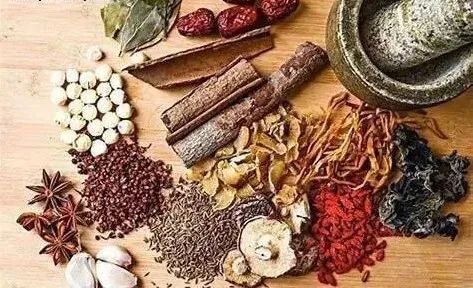
Long-standing phlegm-dampness can transform into heat, which is classified as phlegm-heat; treatment for phlegm-heat requires clearing heat and resolving phlegm, with commonly used herbs including Zhe Bei Mu (Fritillaria), Chuan Bei Mu (Fritillaria), Tian Zhu Huang (Bamboo Sugar), Dan Nan Xing (Arisaema), Gua Lou (Trichosanthes), and Tian Hua Fen (Trichosanthes Root).
Commonly used TCM formulas for improving phlegm-dampness constitution include Er Chen Tang (Two-Cured Decoction), Shen Ling Bai Zhu San (Ginseng and Poria Powder), Bu Zhong Yi Qi Wan (Tonify the Middle and Augment Qi Pill), Chen Xia Liu Jun Zi Wan (Six Gentlemen Decoction), and Ling Gui Zhu Gan Tang (Poria, Cinnamon, and Licorice Decoction). If phlegm-dampness constitution shows significant symptoms such as particularly sticky stools, abdominal distension, or worsening acne, it is advisable to seek professional medical advice for symptomatic treatment.
Source: Wu Hongyan, Renowned TCM Practitioner
Edited by: Publicity Department
Some images sourced from the internet, please delete if infringing
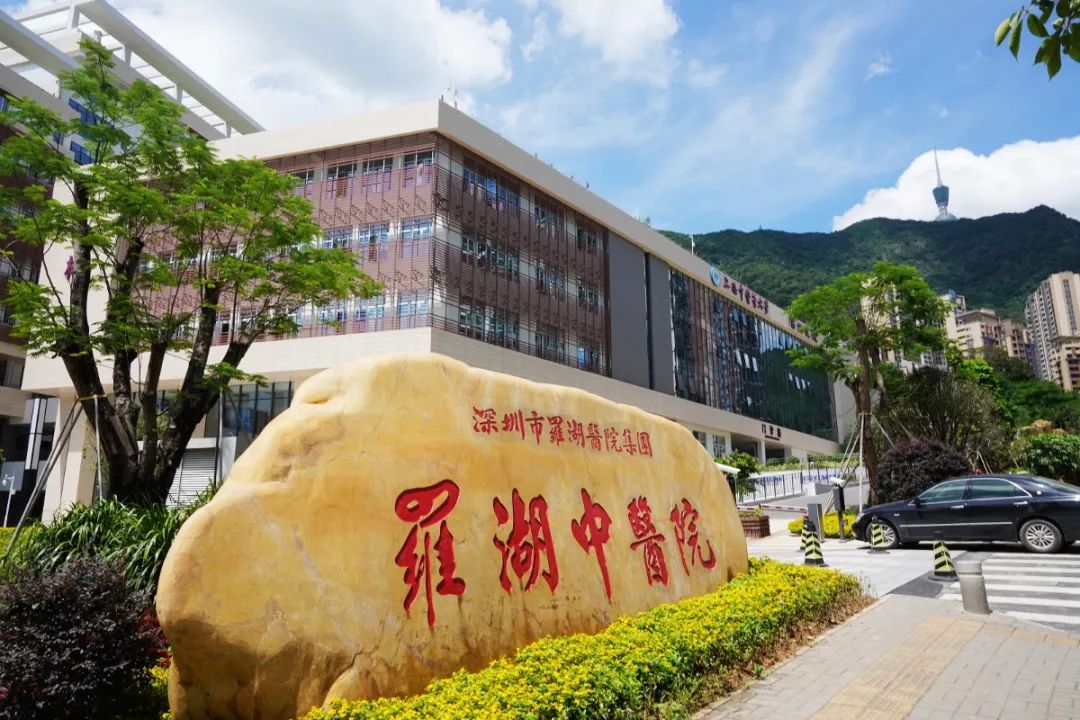 Contact Us
Contact Us

For appointment registration, please scan the code to follow

For information and health养生, please follow
Consultation Phone
0755-25160866 (Hospital Switchboard)
Hospital Address
16 Xiantong Road, Liantang, Luohu District

